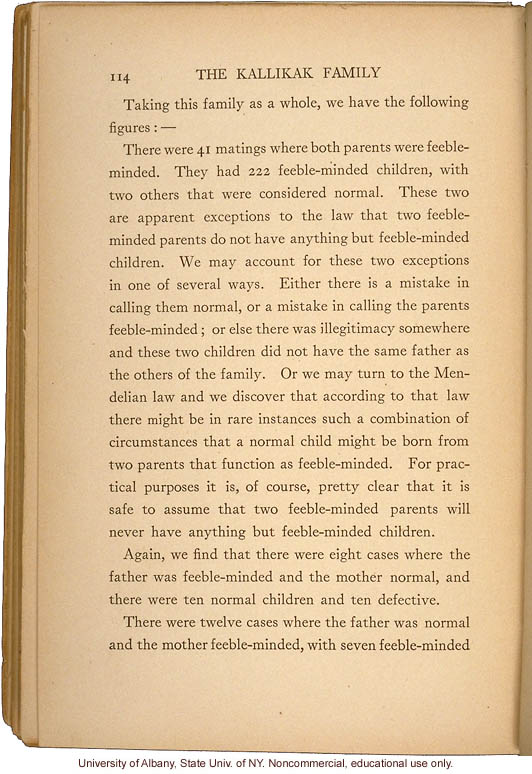114 The Kallikak Family
Taking this family as a whole, we have the following figures: --
There were 41 matings where both parents were feeble-minded. They had 222 feeble-minded children, with two others that were considered normal. These two are apparent exceptions to the law that two feeble-minded parents do not have anything but feeble-minded children. We may account for these two exceptions in one of several ways. Either there is a mistake in calling them normal, or a mistake in calling the parents feeble-minded; or else there was illegitimacy somewhere and these two children did not have the same father as the others of the family. Or we may turn to the Mendelian law and we discover that according to that law there might be in rare instances such a combination of circumstances that a normal child might be born from two parents that function as feeble-minded. For practical purposes it is, of course, pretty clear that it is safe to assume that two feeble-minded parents will never have anything but feeble-minded children.
Again, we find that there were eight cases where the father was feeble-minded and the mother normal, and there were ten normal children and ten defective.
There were twelve cases where the father was normal and the mother feeble-minded, with seven feeble-minded
[end]


